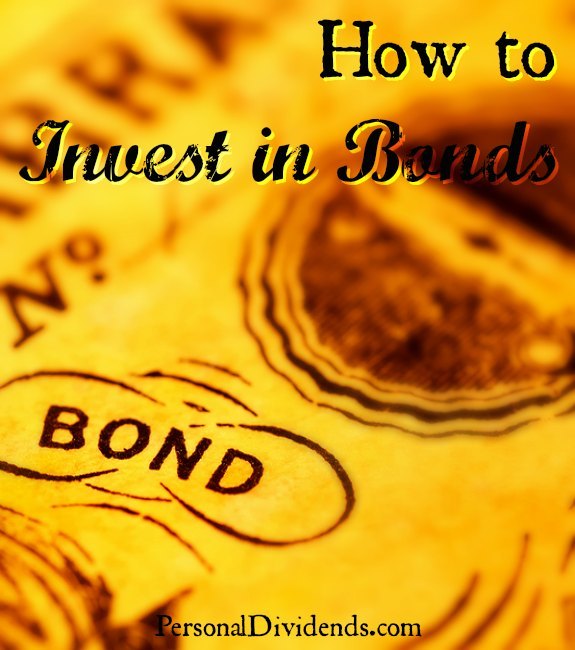- 37shares
- Twitter15
- Pinterest5
- Google+17
When it comes to using asset allocation as an investing strategy, many people like to include bonds in their plans. Bonds are often looked on as relatively safe. Even though there are risks involved with investing in bonds, many people see them as a way to limit some of the volatility of an investment portfolio. Additionally, bonds offer the possibility of income from your investments. With a large enough bond portfolio, you can earn enough interest each year to live off. If you want to know how to invest in bonds, here’s how to do it.

Investing Directly in Individual U.S. Treasuries
U.S. Treasuries are considered some of the safest investments in the world. They are backed by the U.S. government, which is backed by what is considered the most stable taxpayer base in the world. As a result, when adding bonds to their portfolios, many investors like to choose U.S. Treasuries.
Investing in Treasury bonds is fairly easy and straightforward. It’s possible to open an account with TreasuryDirect.gov and make your investments. You can purchase bonds in a variety of denominations, and for a variety of term lengths. The bonds are managed electronically through your account. You can add more to your account anytime you wish.
There are different types of Treasury bonds with different characteristics. One example of a popular type of bond offered is TIPS (Treasury Inflation Protected Security). TIPS automatically adjust yields to match the rate of inflation. The idea is that you don’t lose purchasing power over time because your earnings will change as inflation rises.
Investing in Other Individual Bonds
It’s also possible to invest in bonds issued by other entities. You can invest in company bonds, or even in municipal bonds. In these cases, you often need to go through a broker in order to access individual bonds. You’ll need an account, and in some cases you might need a minimum before you can invest. In many cases, it’s possible to manage your bond holdings electronically and keep track of what you have coming in.
You can also invest in bonds offered by other countries. There is a market entirely devoted to allowing you to access the debt issued by different countries. Investors who wish to see a higher return (and are willing to take on a corresponding risk) might invest in emerging market bonds from countries that are less developed, but offer the opportunity for growth.
Using Mutual Funds and ETFs to Invest in Bonds
Another way to invest in bonds is to use mutual funds and exchange traded funds. Rather than looking for individual bonds to invest in, and going through the process of buying bonds on an individual basis, you can invest in shares of funds that include bonds.
Mutual funds provide you with access to a variety of bonds. These allow you to invest in a large group of bonds all at once. A bond fund is set up to accomplish a specific purpose. High-yield bond funds usually include securities that are considered a little riskier. They might include some municipal bonds that have higher yields, or bonds from emerging countries. There are also income bond funds that are considered more stable, even though the yields are lower. Depending on the purpose of bonds in your portfolio, you can look for funds that meet your needs. You can access bond mutual funds (including bond index funds that come with lower costs) through most online discount brokerages.
Exchange traded funds offer an even easier way to add bond exposure to your portfolio. Like mutual funds, exchange traded funds represent a group of bonds. However, ETFs trade like stocks on exchanges, making them even easier to invest in. You might have to wait longer for mutual fund transactions to clear, while ETFs trade faster. Additionally, many ETFs come with fees even lower than index funds. You can choose bond ETFs that serve specific purposes in your portfolio, and even receive regular income payouts.
Before you invest in bonds, make sure that you understand the risks involved, and that you understand where bonds fit in your own investment plan. You should also consider the tax implications involved with bonds, and how you can keep them in tax-advantaged accounts in some cases.
Miranda is freelance journalist. She specializes in topics related to money, especially personal finance, small business, and investing. You can read more of my writing at Planting Money Seeds.
